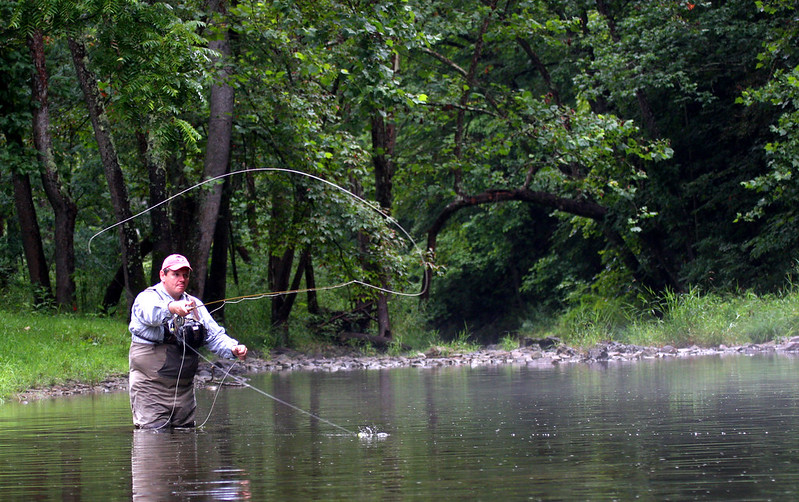While throwing a long overhead cast is the image that most people have in there mind about fly fishing, there are other casts that you will have to have in your arsenal if you are to be successful. Learning to roll cast with your fly rod is essential. In fact it can be the cast you use the most often, especially on small streams or densely wooded shorelines. When you don’t have the room to backcast you need to use another approach to place your fly where the fish are biting.
What Is A Roll Cast And Why To Learn It?
The roll cast is done with no backcast and your line already in the water. It allows you to cast and place your fly without your line going behind you. Think of being near the bank of a stream with a lot of brush. If you try to backcast your line will get caught in the foliage.
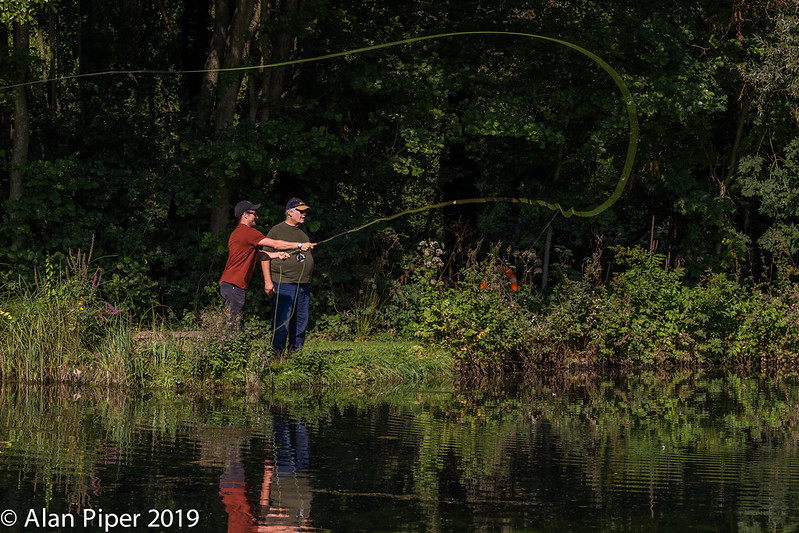
Instead, you will use the tension of your line in the water to load your rod tip and roll the line out in front of you, hence the name of the cast. It’s a good cast to learn as it works well in tight spots and can save you from having to untangle your line from brush on the banks. When done well it is also a good cast for making stealthy placements as your whole line comes out of the water and causes the least amount of disturbance.
Roll Casting Technique
The roll cast is relatively simple but so many people miss small points which can lead to a tangled line or spooking the fish by disturbing the water with your line.
Here are the steps to do a roll cast.
Set Your Anchor
The line in the water is the anchor which will create tension allowing you to load the rod tip for your roll cast. You want your line to be stretched out on the water rather than a bunch of loose squiggles. You want your anchor line to be in the direction you are planning to cast.
To do this bring your rod tip up and with a little tension with your non-dominant hand on the line bring your hand up and back in a smooth motion. If the line is all out then you can just pinch it with your finger and only us your dominant hand. You want your hand to be even with your shoulder or ear level and the rod tip back at a 1 o’clock position behind you.
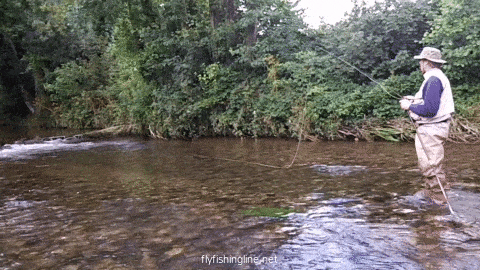
If you want to change the direction of the line then you can use the rod tip to flick the line in that direction so it is at the right angle when you cast.
Make The Letter D
This is where timing comes in. You want the line to make a capital D with the rod being the spine. The size of the D loop will dictate how much fly-line you have to load the rod tip. A small D won’t have much energy while a bigger one will allow the rod to load up more and cast more efficiently.
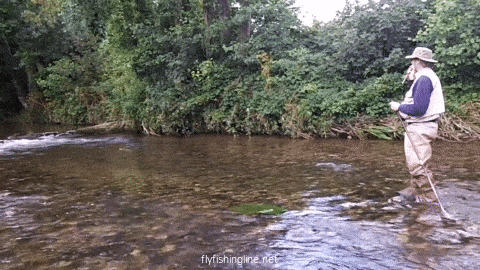
The timing is important. You want to bring the rod back long enough to have a good-sized D while still maintaining tension on the line in the water. If you pause too long the tension will be lost. Depending on the current in the water the timing will vary but with a few test casts, you will quickly get a feel for the timing.
Push and Snap
The forward cast is a critical step in the success of your roll cast. I’ve seen many people have problems with this as they start with the rod moving in an arc that doesn’t develop a bend to the rod tip. Instead, you want to start the cast with a forward push and finish with a downward snap of the wrist. The forward push should have the rod at the same angle you started with (about 1 o’clock) and only snap the wrist forward at the end of the stroke.
This will impart good energy to the rod and keep your loops tight. When you roll cast, you want the line to come fully out of the water as this will give you the best casts and quietest presentation to the fish.
The end of the roll cast should end with the rod tip still high at about 10 o’clock. This will keep the line out of the water until the loop fully unfurls.
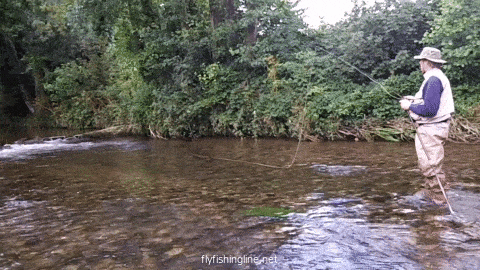
The complete process is shown in this video.
Tips
Cast Parallel To Your Line
As you get ready to cast take a look at the line in the water. You want your casts to be parallel to the anchor line. If you try to do a sharp angle change you will lose a lot of energy and control. You also want to avoid crossing your anchor line as this is a recipe for tangles. Just like in Ghostbusters, you never want to cross the streams, or in our case the line.
If you want to change the direction then lift your line up or downstream before you bring your rod back to cast.
Keep Your Shoulders Healthy
The roll cast starts from an externally rotated shoulder position which when done repeatedly can cause issues. I’ve had shoulder problems and a long day of fishing can aggravate it.
To combat this I’ve found training the rotator cuff and rear deltoids have really helped. With an elastic training band, I do face pulls and band pull-a-parts, three times per week for 3 sets of 25 reps.
Additionally, if you have shoulder issues I’ve found hanging from a bar like you are going to do pull-ups really helps open up the shoulders. You can hang with all your body weight with feet off the ground or just grip a bar you can reach and bend your legs. I do this at least 4 times per week for 2 minutes total per session.
If you find a long day of fly fishing bugs your shoulders, wrist or elbow, consider seeing a physiotherapist or check out online resources to halt the problems from becoming a major issue.
Conclusion
I have days that due to the conditions on the bank, the roll cast is the only cast I use. Adding this technique to your skillset will help you when fishing from dense banks and save you from getting your lines tangled in the trees.
When you start to master the roll cast you will find putting your fly on those little sinkholes and quiet spots where the big trout hang out to be much easier.
Header Image: Jason Means https://flic.kr/p/59uYUB
